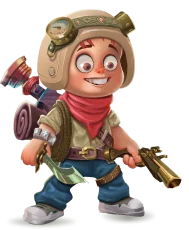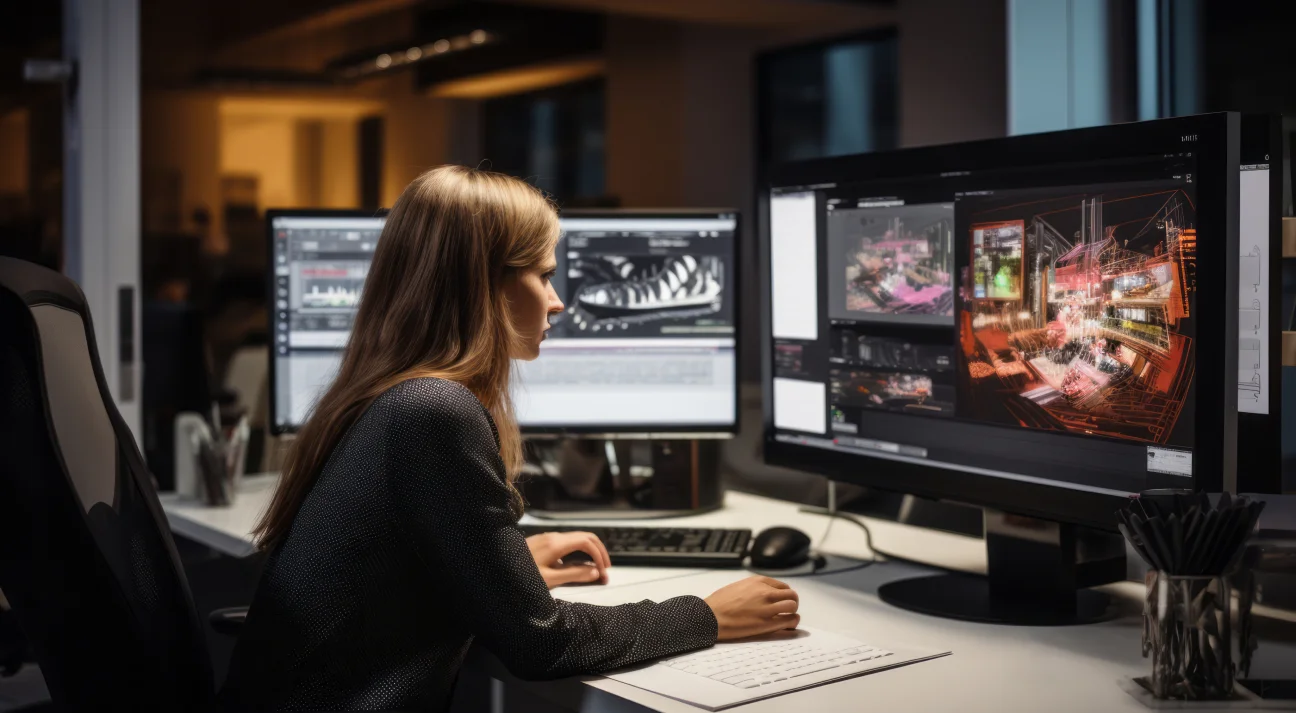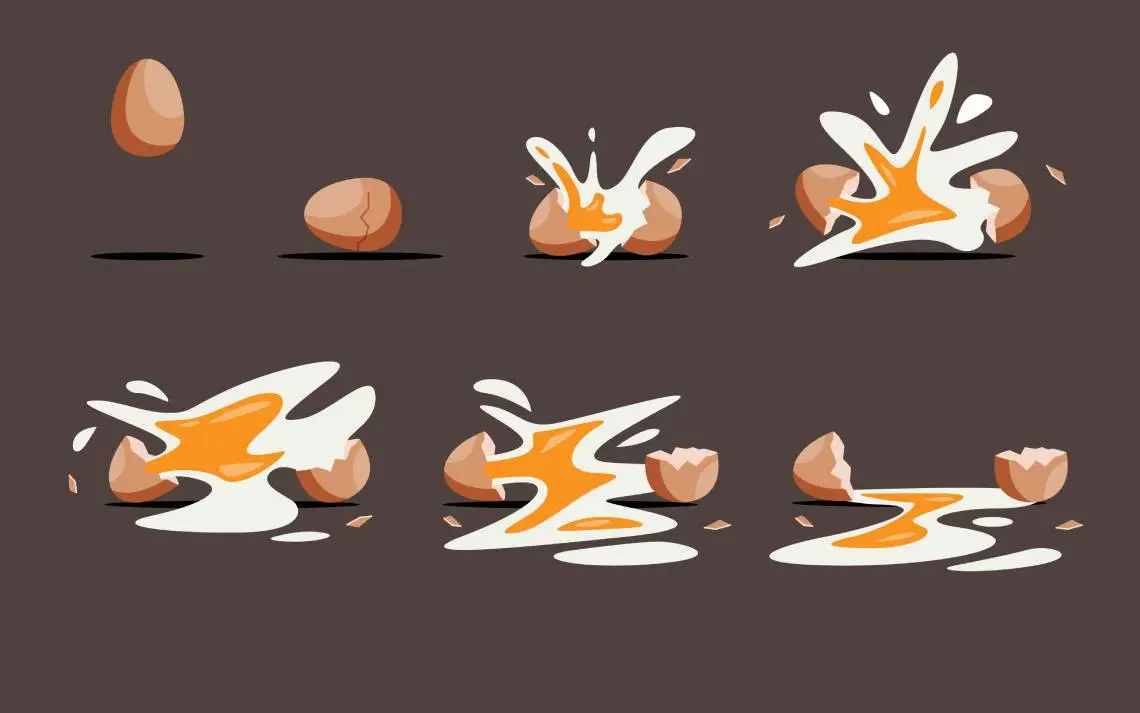
3D Game Animation: A Guide On Elevating Your Gaming Experience
Are you a video game lover? Of course, you are! So, you probably have played FIFA Soccer, Call of Duty, Uncharted, and Asphalt 9: Legends, like other 3D games. How was your gaming experience then? It must be captivating, engaging, exciting, and thrilling. But do you know what makes them such interesting games? It’s the 3D animation used in such video games.
With its three-dimensional magic movements, 3D animation brings many imaginations to life that fuels the soul into your game. Because of the depth and realism like wonders done by 3D animation, you can provide your players with a top-notch gaming experience.
But how to effectively use 3D animation in your video game is the biggest question. 🤔 Worry not, as 3D animation experts are here to help you!
In this guide, we have shared our secret code to creatively and strategically use 3D animation in games, so your game can do wonders like other popular 3D video games.
So, let’s begin our 3D game animation journey!
- What Is 3D Game Animation?
- What are the Different Types of 3D Animation You Can Utilize in Your Games?
- What Benefits Can 3D Animation Bring to Your Video Game?
- How is 3D Animation Used in Games?
- What Tools to Use For 3D Game Animation?
- How to Create 3D Game Animation?
- 3D Game Animation Best Practices
- How Much Does a 3D Game Animation Service Cost?
- How Can 300Mind Become Your 3D Game Animation Partner?
- FAQs on 3D Game Animation
What Is 3D Game Animation?
3D animation is a process used to create moving screens, characters, and objects in a three-dimensional space. These moving objects are 3D modeled and brought to life using computer-generated graphics, also known as CGI. So, this is the 3D animation that gives us the illusion of their movement and motion.
Unlike 2D game art and animations created on a flat surface, it provides depth and a sense of realism to the object and its motion by stimulating light, shadow, and perspective. So, 3D animation is preferred in concepts where intricate and lifelike animations are required to showcase complex environments, scenes, and characters.
3D animation for games covers the integration of 3D characters, environment, objects, and gameplay, following players’ interactions with the game.
In this, skilled 3D game artists utilize modeling and animation tools to model game entities and bring them to life using keyframes, skeletal animation, physics simulation, and other techniques. This way, the game development team can provide players with a realistic and dynamic gaming experience.
What are the Different Types of 3D Animation You Can Utilize in Your Games?
Based on the types of graphics and object modeling for games, it can also be done in different manners. So, here are different types of 3D animation you can apply to your video games:
Keyframe Animation
It’s a traditional animation technique where 3D animators manually create specific keyframes for the location, rotation, and scale of an object in a three-dimensional space. With this, they also define starting and ending points of an animation. Then they animate these keyframes where the object appears to move the screens smoothly over time.
Let’s take an example of a walk cycle animation of a human character. In this, keyframes are set for the position of limbs and torso on every frame to create the illusion of walking. See the image below for a better understanding:
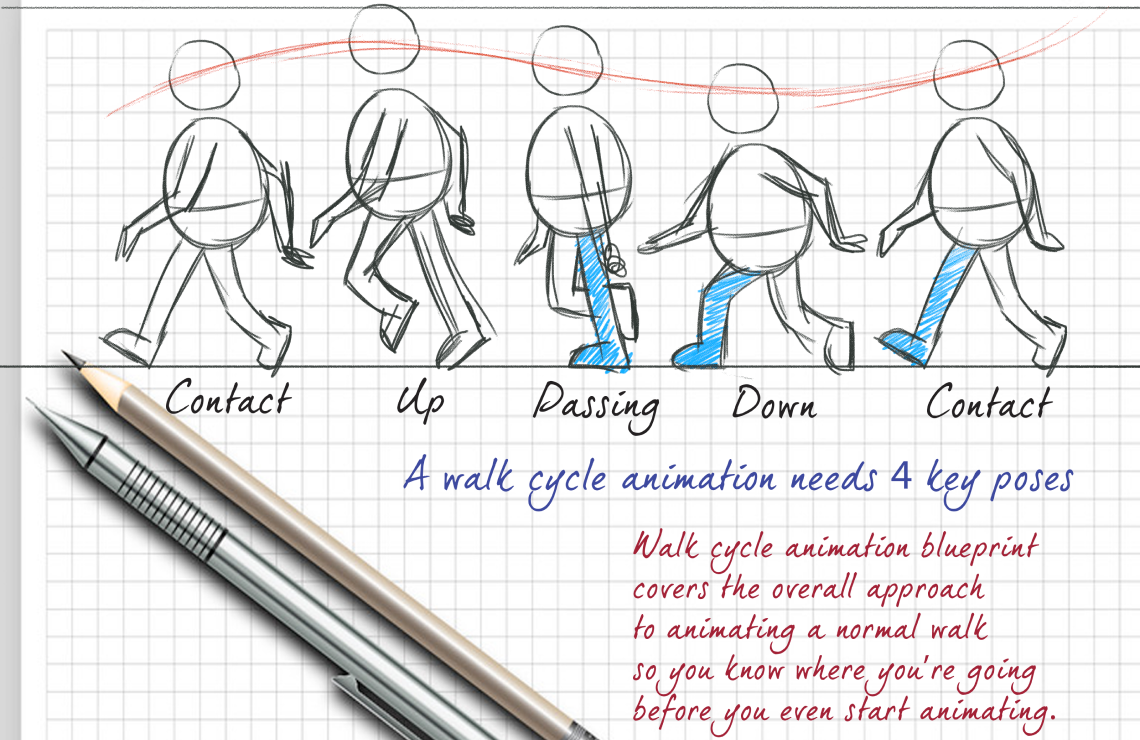
So, once all keyframes are done, animated, and rendered, you will see something like the one shown in the video given below:
So, that’s how the keyframe animation works.
Skeletal Animation
This type of animation is extensively used in character animation. In this, animators use the bone or rig structure of characters and move their skeletons to make, capture, and animate their movements.
Have you watched puppet shows before? If yes, then this skeletal animation is created just like that.
Physics-based Animation
It is a successor technique to keyframe animation that helps you animate your game subjects in a way that they do not fall into unnatural movements that many games have witnessed like Fallout76, PUBG, etc.
In physics-based animation, artists use physics simulations to achieve natural and realistic movements of the game subject while considering factors like gravity, friction, and collisions.
You can also utilize physics-based animation in different types of concepts and subjects utilizing its sub-types:
Rigid Body Animation: It simulates the solid object’s movements based on its real-world physics values, such as weight and gravity. Falling subjects, bouncing balls, etc., are great examples of this type.
Fluid Animation: As the name suggests, this type of animation is done in the fluid elements, such as waterfall, flowing river, lava, etc., by considering its properties like viscosity, density, and turbulence.
Pyro Animation: In this, the flow of the fire, smoke, and gas elements’ motions are simulated based on factors like temperature, density, and buoyancy. So, you can provide your players with the realistic experience of their game avatar experiencing real-world-like fire and smoke.
Fabric Animation: Using this, you can fuel fabrics, like curtains, clothes, etc., with their natural stiffness, elastic, and wavering movements.
Particle Animation: In this game environment, such as trees, fireworks, leaves, etc., are animated to create their movement as they act in the real world.
Popular games like FIFA and Assassin’s Creed have used physics-based animation to provide their players realistic gaming experience.
Stop Motion Animation
If you have this hobby of art, you must have dreamt of creating a scrapbook of animation in which each page shows the progress of your concept. When turning all pages quickly in sequence, you get to experience the illusion of them moving. That’s how the concept of animation came to life.
So this type of animation is known as stop-motion animation. In the case of games, it is done with the help of a computer, sketch, and animation software.
Motion Capture (MoCap) Animation
It is a very highly advanced animation type extensively used in movies and bigger games with hyperrealistic animation requirements. In this, an actor is hired to perform the act (i.e., running, walking, falling, jumping, fights, eyelids movements, etc.), which is recorded using the motion capture suit.
Later, the animator uses that act to create related rigging for respective 3D models and animate accordingly.
Procedural Animation
Procedural animation is achieved through logical conditions or rules set on an object using nodes. It employs less data as input compared to others and lets animators easily work on edits.
You can use it to show the growth of vegetation or vines growing on a surface like a wall or tree. To execute it, the logic for the object and texture is used to set the growth and density of vines.
Artists at 300Mind, always try to do something creative, out-of-the-box. A few months back, they created and posted “Procedural Fence, Brick & Vegetation Generator” in Blender, which was also featured in the category of “the best Blender Goodie in the Modifier Setups.”
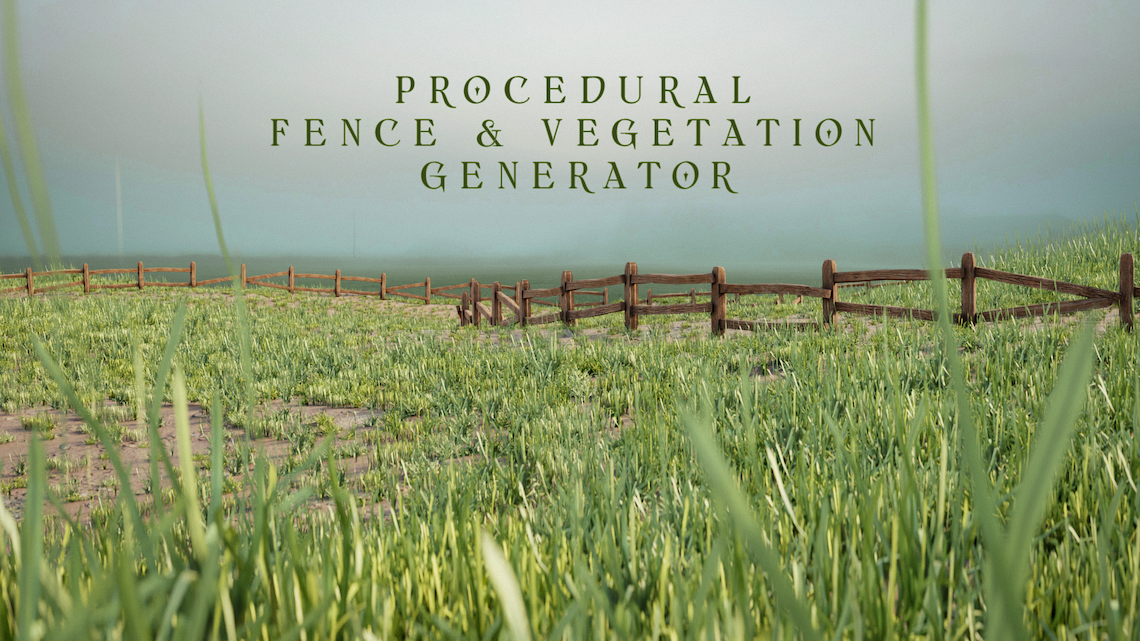
These are only a few types of 3D animation, but there are others as well. After reading these animation types, you must be getting thoughts like how they can benefit you. Well, the next section is all about that.
What Benefits Can 3D Animation Bring to Your Video Game?
3D animation in games can bring many benefits, and some of the popular ones are stated below:
Realism and Immersion
With the help of 3D animation, the game development team can help you create realistic and immersive game worlds with lifelike characters, objects, and environments. It lets you create a virtual universe that feels alive. With this, you can give your players a highly captivating gaming experience.
More Interactive Game Environment
Your game environment is itself a new reality/universe to players, which they surfer and delve into. Using 3D game animation, you can enable players with a game environment with which they can virtually interact, manipulate elements, and explore them in a way like they are traveling a completely new world. It creates a positive and additive feeling for players, which makes them play it often.
Smoother Game Performance
The application of 3D animation in games allows players to move smoothly and realistically. Meaning, every action commanded is executed in real-time, putting more emphasis on the game’s performance. Of course, apart from the animation part, the high standard of coding also helps to make the gaming experience smoother.
Attention to Details
As 3D animation promises realism and immersion, it will focus on details. So, when using it, you can give character design all details for facial expressions, emotions, and subtle movements.
Apart from that, the environment of your game also provides players with a more lifelike feeling, improving their attention to the game. All of these elevate your game’s narratives.
Cinematic Cutscenes
If your game concept is similar to Uncharted, Jumanji, and cinematic feel-like games, 3D animation can do wonders for you. It helps you create cinematic cutscenes that advance your game’s storyline and provide impactful moments for players. The continuity and depth of narration in your games can help you bring an enriching gaming experience to life.
Future-proofing
It’s not that long since 3D animation entered the media and gaming industry. Since its inception, its progress has been continuous and quite notable. And we all have witnessed it. So, not just us and you but anyone can say that the 3D animation is going to stay here for longer.
3D animation will advance towards becoming even more realistic than it is today. And with it, it will take the gaming industry to a great extent. So, if you’re planning to use 3D game animation, then do it without a doubt because it is and will remain relevant and competitive in this rapidly evolving gaming industry.
Increased Player Retention
With 3D game animation employing realism, immersion, future-proof, and much more in your game, it’s obvious that your player will find it interesting. And their interest in the game will make them come back often to play, leading to surety for player retention.
All of these benefits are okay, but you do want to know the most popular ways to add 3D animation to your video games. Let’s explore that!
How is 3D Animation Used in Games?
As you’re here reading this from the start, you might have an idea of how 3D animation is utilized in games. Okay, let’s not extend this guessing game and explore three effective ways you can use 3D animation in your next video game:
Character Animation
Have you ever thought about how your avatar is in the game, meaning the character jumps, walks, runs, and does all the actions you’ve commanded?
All of these movements and actions of virtual characters are brought alive with the help of character animation. Your game character concept and design are made realistic and lively using different 3D animation types, which we discussed above. It allows you to control your game and make them interact with other game objects the way you’ve wanted them to.
Considering the impact of 3D character design and animation, we have 3D modeled and animated our star character of Forbidden Islands to showcase its actions in the game arena.
The character animation in this game is done to make this character smoothly walk, run, jump, and pick up objects, the way you want to navigate it. See the GIF given below for better insights:
Environment Animation
Along with making the game characters look realistic with character animation, you should not leave your game environment simple and sketchy. You can take the help of game environment animation to make this realistic and lifelike.
Starting from terrain to architecture, props, objects, water bodies, weather effects, and many other things composed under a game environment can be animated using physics-based animation.
This way, you can make your players immersed in the virtual game space you’ve created and enjoy it. Just the way, we have done environment animation for our Stylized Aztec concept as shown below:
Special Effects
When playing any high-resolution and animation-based game, you must have noticed special effects like fire, smoke, lightning, etc. Along with that, you do know how realistic they look. Want to know a secret? Realism in the game’s special effects is brought up with the help of 3D game animation techniques.
So, harness the power of 3D video game animation, elevate the gaming experience of your players, and make them become dedicated players.
See how we have leveraged animation for the special effects of our game – Valley of War, to make it look eye-catchy and provide realistic gaming feels to the players.
Till now, you have gathered a lot of information about 3D animation in games but must be curious to know tools that can help you make it happen.
What Tools to Use For 3D Game Animation?
You will find countless tools for 3D game animation, but here are a few that most game animation experts suggest use for your game project:
Blender
Blender is a free, open-source companion for 3D game animators to fuel life into their gaming concepts with modeling and animation. It provides tools for modeling, texturing, animation, rendering, and more.
It gives artists the freedom to create character, object, and environment animation through keyframe animation, skeleton rigs, and shape keys. It offers different animation feature sets for various areas, like character pose, independent movement controls, kinematics for fast poses, and sound synchronization.
Not just that, Blender also allows the use of rigging to model and animate posable characters with enveloping, skeleton, weight painting, mirror functionality, bone structure, etc.
In short, the range of features of Blenders makes it an ideal match to create stunning visual effects and character animations when working with complex game environments.
Autodesk Maya
Maya is a robust industry-standard tool widely used to provide animation for films, creative ads, and game development. You can even call Maya a successor of Blender for character rigging and animation, as it offers toolkits to add character behaviors and interactions.
It lets you add advanced layers to rigging and animation. Moreover, the integration with game engines, like Unity, makes it a convenient option to choose as it enables easy transfer of gaming assets and animation across software and game development environments.
Unlike Blender, Maya is a licensed/subscription-based product, which can lead to thinking twice before employing it. However, it’s worth investing in such a robust animation tool.
Cascadeur
In the world of 3D game animation tools, Cascadeur is a specialized tool designed explicitly for creating realistic physics-based animations, especially character animation. Using physics principles, it simulates the animation scenarios to generate natural and believable movements.
Cascadeur also helps with motion caption animation and easily integrates its MoCap data to better refine animations blended with physics-based simulations.
In short, Cascadeur is highly recommended for dynamic poses and realistic 3D game animations.
After knowing the tools, you will also feel curious to know more about the process of creating 3D game animation.
How to Create 3D Game Animation?
Here’s a step-by-step process of creating a 3D game animation to elevate your gaming experience:
Conceptualize the Game Animation Needs
There was an idea that emerged for us to discuss this topic. To develop an enthralling game with out-of-the-box animation, you need to dream about it and brainstorm on it to conceptualize it and work on the game animation.
It’s always about perfecting the concept and being sure about it before sending it for production. That way, you can utilize the best potential of 3D animation in your pivotal game.
Prepare the Game Storyboarding
Storyboarding is a crucial stage in game development in which you plan everything from game flow to animation and graphics needs, along with much more.
For this, you might need the help of a storyboard artist to prepare sketches of each scene, character actions, cinematic directions, visual effects, and much more. Using this, you can create game concept art, to begin with your game design.
Let’s take a look at the concept sketch of a game character on one screen who is a student and thinking of going on an adventure with a happy face.

The below-shown image will give you an idea of what that screen will look like when it is 3D modeled. Using this drawing, your 3D artist will model it in something like this:
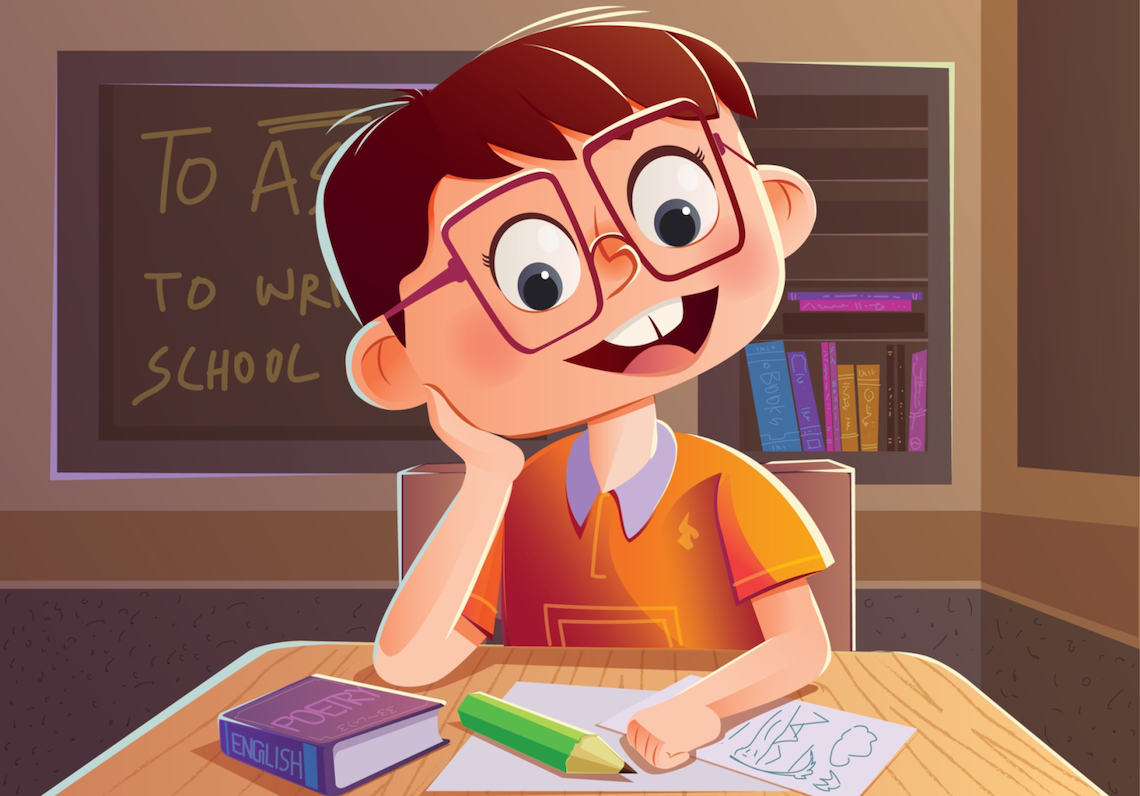
This was just an example of how the game storyboarding works. The ultimate goal of using game storyboarding is to ensure the smooth flow of game design and development.
3D Modeling
After all the conceptualization and planning phases, the modeling is the functioning part where your imagination starts to get shape. An initial 3D model is built using a mesh of points, lines, and curves. Your computer sees this basic 3D model as a geometrical shape and we as a skeleton.
After adding the details, colors, and textures, you can see that model as a real object. You can use Blender, Autodesk Maya, and other popular 3D modeling software that we mentioned above for this task.
Add Details and Textures
For now, just the geometry-based 3D model is done. You still have a lot of detailing and texturing work remaining in the object’s outer layer.
The detailing and texturing can include skin, fur, hair for a character, metal finish for the machine, apparel, brickwork for the wall, and much more.
You can apply all of this texturing using tools like Adobe Substance Painter, Blender, etc., which play a small part yet has a huge impact on 3D modeling.
Apply Rigs
Rigging is the process that helps you apply a skeletal framework with rigs in an animation. Using this, you can control the movements of characters and gaming objects. But how can you identify rig structure in the character or object? See the media attached below for better reference:
In the above media, you can see the skeletal/joint-like structure with overlaid boxes and spheres. That’s your rig structure applied to the 3D character model to control the movements of this character and execute the character animation.
Start Animating the Game Subjects
In the model, once the blocking has been approved, you can move the rigs of the game objects and characters to bring them into action and record the animation.
While animating the game subjects, you also apply visual effects, apply lights, and do much more to make that scene alive.
Rendering
The animator animates each game scene on parted screens, but to bring that into one whole piece, you need the help of rendering. But what is it?
Well, rendering is the process of assembling all animation sequences and playing them in line to set perfectly so you can enjoy an entire scene in synchronization.

This rendering process not only helps you get your animated pieces of the game in synchronization but also music and foley.
During this process, you can also fix game graphics compositions and visual effects to make your game animation look more realistic as a final result.
Now that you have gone through the 3D game animation process, what about the best practices and considerations? Don’t you worry! The next section will cover all the information you need.
3D Game Animation Best Practices
Let’s take a look at some of the 3D game animation best practices to achieve the result you want without falling into any hurdles:
Follow the Latest Game Animation Technology Trend
The evolution of technology is inevitable, and keeping up with it all the time can be challenging.
Hence, the selection of the right 3D game animation tools and team becomes to save you time and get a better gaming solution.
When selecting your game development team, you should ensure that they are using the latest version of tools and using popular tools, like Unity, Unreal Engine, Autodesk Maya, 3Ds Max, After Effects, and other tools.
After all, their mastery of such powerful gaming tools can benefit you.
Observe Real World Scenes
Nowadays, 3D animations in games are getting so realistic, making it hard to guess whether it is a graphics work or a real-world scenario. Well, I have faced this confusion many times. Have you?
It’s the magic created by the thorough observation of the 3D animator. The more observer – your 3D animator is, the better realism they can fuel into your game subjects. Along with it, the knowledge of physics concepts also gets on the road, which the animator must have.
The knowledge of physics, gravity, and much more calculations helps them make game subjects do movements more convincingly.
Follow Human Emotions
If your 3D game includes characters that require complicated interactions, then the animator has a lot to work on. They need to spend more time observing and understanding human facial expressions and the physics behind them and then showcase them in the character’s facial animation. And that’s the best practice behind knowing more about human emotions.
If the 3D animation artists are quite experienced, then they are well-versed in this kind of knowledge. Using these skills will help you create perfect character facial animation mimicking exact human emotions.
Go from Basics to Details
Animation is quite an attention-taking process and contains many details in which anyone can easily get lost. Hence, there’s an expert suggested game animation process that every game animator should follow to avoid ongoing distractions.
All of this starts with game storyboarding and rough paper sketches. After that, the core design process takes place with 3D modeling, detailing, texturing, layout, rigging, and ongoing adjustments to lights, shadows, and other details.
How Much Does a 3D Game Animation Service Cost?
Estimating the cost of 3D game animation service is quite a complex task due to various affecting factors, such as:
- Animation complexities;
- The quality of the animation;
- Wow, effects needed to be included in game animation;
- Required experience level of the 3D game animators;
- The country of the game animator;
- The scope of the project, and many others.
If you see, there are various engagement models available for this service. However, amongst those, only a few are widely popular, which are:
Hourly Rate: In which you’ll hire the talent for certain weeks or months, or a year based on mutually agreed working hours in a day.
Fixed Cost: Here, you get to provide your clear game animation requirements, and the team will get it done within a certain time as agreed upon.
Project-based Cost: Here, you’ll hire a game development studio for the entire game development project, from conceptualization to game design to animation to development and post-delivery fixes and updates.
Among these three, many experts suggest going for hourly hiring, meaning dedicated hiring, where your hired team will work dedicatedly for your gaming project.
How Can 300Mind Become Your 3D Game Animation Partner?
Overall, we can say 3D animation in games has revolutionized the way we play and experience games. They have enabled us to develop games with realistic graphics and animation. Of course, the use of game animation creates a positive impact on players, leading to your game business benefits. Then why not employ it? To do so, you do need the help of expert 3D game animation experts.
That’s where 300Mind comes into the picture. We have a dedicated team of 3D animation experts who are highly skilled and exceptionally creative, supremely competitive to work on your gaming project no matter what kind of complex concept it is.
So got an amazing game development and animation idea? Share your requirements with us to get an effective solution with cost estimation.
FAQs on 3D Game Animation
Yes, of course! 3D video games do use 3D animation to enhance their players’ gaming experience, visually as well as action-wise. That’s the reason why Uncharted, Mortal Kombat 11, Rage 2, ES UFC3, God of War, and many other similar-like video games with stunning animation are top choices of strategic gamers.
Though 3D animation for games and movies seems similar to you, they have many reasons that differentiate them. Game animations have more camera angles and controls, animation cycles, dependency on programmed AI scripts, programming requirements, hard-to-catch animation glitches, real-time animation rendering, and more. On the other hand, movie animation has higher polygon requirements, no programming requirements, easy-to-catch animation errors, and rendering happens before production.
We cannot say that 2D animation is better than 3D animation or vice versa, as both dimensions have their specific audience, strength over concepts, and impact. You can also read our blog on 2D Vs. 3D game development, for better understanding as it covers differentiators in the concept of video games. So you can make a mindful decision for your mission-critical game development project.
The time to create 3D animation for games depends on factors like the complexity of the 3D animation, the experience of the talent, the tools you use, and many other factors.
